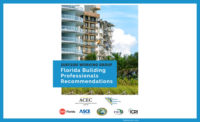Engineers Surprised by Damage To Modern Buildings in Christchurch
The New Zealand earthquake surprised engineers by triggering severe damage or collapse of some recently constructed buildings.

The magnitude 6.3 earthquake that struck 10 km from Christchurch, South Island, New Zealand on Feb. 22 brought down or severely damaged some contemporary structures because the quake was extremely shallow—centered only 5 km below the surface.
“New Zealand has very good loading standards and a strict regulatory environment and since the mid-70s onwards, the buildings have been designed for earthquake resistance very well,” says John Wilson, chair of the Australian Earthquake Loading Standard and Deputy Dean of Engineering at Swinburne University of Technology, speaking on behalf of the Australian Science Media Centre (AusSMC).
The standard of design has been improving over the last 20 years or so, “which is why most buildings performed well, with the exception of a few buildings that were severely damaged or partially collapsed.”
Engineers representing the international community are already gearing up to inspect the damaged contemporary buildings to determine why they failed.
A team from Miyamoto International Inc., led by Amir Gilani, left for New Zeland Feb. 23. There the team will meet up with a New Zealand civil engineer. A team from Canada plans to go to Christchurch soon.
“The New Zealand construction code is one of the most stringent in the world for new buildings and it partially inspired our own Canadian Code,” says Dr René Tinawi, manager of the Canadian Seismic Research Network and Professor Emeritus at the Ecole Polytechnique de Montreal.
“This is why Canadian experts would like to inspect first-hand how newer buildings fared during this second Christchurch earthquake, as soon as the situation allows.”
To help with rescue and recovery, and at the request of the New Zealand government, the U.S. is deploying a U.S. Agency for International Development (USAID) Disaster Assistance Response Team (DART). The team will include the Los Angeles County Fire Dept.�S Urban Search and Rescue team (USAR) to assist with the search and rescue efforts.
The USAR component of the DART will be what is called a "heavy team," bringing more than 70 specialized personnel and all necessary equipment to make live rescues in even the most precarious situations, according to USAID.
Engineers are not surprised there is damage, especially to the older, unreinforced masonry buildings, considering their masonry is heavy, brittle and vulnerable to earthquake shaking.
“This quake was pretty much a bullseye � it was quite a large Magnitude 6.3 event and so close to Christchurch that we weren�t surprised to see significant damage; at that close range, the level of shaking is quite severe,” says Wilson.
The New Zealand Building Code can be viewed on-line. In particular, clause B1-Structure covers seismic resistance, says the AusSMC. The loading code from 1976 to 2004 was in various editions of NZS 4203, and since then NZS 1170.5.
Limit state design methods have supplanted working stress methods for habitable buildings during this period. All of the loading codes define seismic hazard zones on maps that have changed over the years.
Apart from the zone factor, the designer must include soil type, building natural period, importance level, and working life in determining the earthquake loads to be used in design.
An Aftershock of Earlier Quake
"New Zealand is a first-world country, and the reason the damage is so much greater is that it's an aftershock of the larger 7.1 magnitude earthquake that happened last September near Christchurch,” says Melissa Giovanni, a professor of geology at the University of Calgary, Alberta, Canada.
Giovanni speculates that buildings were already weakened by the Sept. 4 quake so much that magnitude 6.3 temblor would be much more devastating.
“Another reason this earthquake was more damaging is that it was closer to the surface, and so the movement would be more intense than in a deeper quake where the earth can dissipate some of the energy,” says Giovanni.
In New Zealand, the North Island is located where two plates are converging - the Australian Plate and the Pacific Plate. On the South Island, the plates are sliding past each other in what is called a strike-slip fault, called the Alpine Fault. It's similar to the San Andreas Fault in California, says Giovanni.
"These plates are always in motion,” she adds.
The plates grinding and scraping past each other breaks rocks and causes earthquakes.
The crust is still trying to regain its equilibrium since the Sept. 4 quake, says Giovanni.
She calls the fault that broke an oblique thrust, which means there was some horizontal movement and some vertical movement.
“So the initial movement probably felt like a lift as the earth moved vertically, and then later you would feel vertical and horizontal movement," says Giovanni.
The Feb. 23 quake is part of a series of aftershocks from the September event, say engineers. Aftershocks have been common since September, with several reaching magnitudes larger than 5.0.
“We can expect aftershocks to continue for days, weeks, and months,” says Giovanni.
.
5 m is extremely shallow............Did anyone touch it?
Excellent comments by both anonymouses, I missed the 5 meter depth and read 5 kilometers.<br/>Years ago a very sensible suggestion was made that the magnitude of a number be expressed<b...
Years ago a very sensible suggestion was made that the magnitude of a number be expressed
using the unit only followed by the number of zeros expressed as the number of zeros followed by
"aire" by analogy with "millionaire" which would be written as 6 aire (or 6aire).
Note how this facilitates handling large numbers; for example the U.S is running an annual defeceit
of $1.5 trillion, with a population of 300 million what is the shortfall per capita ?
1.5 trillion is 1.5 12aire, 300 million is 3 8aire, thus per capita shortfall is 1.5/3 4aire or 1/2 4aire =
1/2 of 10,000 (4aire) or $5000.
Instead of saying million, billion, trillion etc we should be encouraged to say 6aire, 9aire and 12aire
respectively.
Incidentally for a long time (perhaps as late as 1900), civil engineers used the pound as a unit so the
numbers they worked carried a lot of superfluous figures.
I lived in Chch for a while about five years ago. Coming from California I always felt uneasy about the buildings there. One of the things a friend who had lived there for years said wa...
The comment that "limit state design methods have supplanted working stress methods for<br/>habitable buildings" just means on its face that truer models of nature have supplanted false...
habitable buildings" just means on its face that truer models of nature have supplanted falser
versions of nature.
No doubt ENR was well intentioned in making this true statement, but this bald statement can be read
as an indictment against using more realistic models of nature in favor of using less realistic models of nature.
is it 5 M or 5 KM?<br/>the article said<br/>"The magnitude 6.3 earthquake that struck 10 km from Christchurch, South Island, New Zealand on Feb. 22 brought down or severely damaged some...
the article said
"The magnitude 6.3 earthquake that struck 10 km from Christchurch, South Island, New Zealand on Feb. 22 brought down or severely damaged some contemporary structures because the quake was extremely shallow—centered only 5 km below the surface."
I am in Christchurch and was in the CBD. Recording stations have vertical accelerations of 1.0 g to 1.7 g. That's beyond code. Liquifaction has had a significant impact also.
Most of Christchurch, including the CBD, was originally a wetland that was drained as the early settlers arrived. As I drove across town near still existing wetlands it was immediately ...
According to Wikipedia: The intensity felt in Christchurch was MM VIII.[2] The peak ground acceleration (PGA) in the Christchurch area exceeded 1.8g (i.e. 1.8 times the acceleration of gravity),[13] with the highest recording 2.2g, at Heathcote Valley Primary School,[14] a shaking intensity equivalent to MM X+.[15] This is the highest PGA ever recorded in New Zealand; the highest reading during the September 2010 event was 1.26g, recorded near Darfield.[13]
I can believe the comments of the individual who lived in Chch who came from California, where is was known that most developers used the 80% solution. Montana, the wild west, 80% is p...
How shocking! Chirstchurch is where two giants of earthquake engineering, Professor Tom Paulay and Professor Bob Park, lived and spent their professional life dedicated to safe earthqua...
Some observations from NZ,<br/> 1.Not all the modern buildings suffered the same upset as each other (same <br/>as last time) this makes it hard to compare even neighbouring sites on <b...
1.Not all the modern buildings suffered the same upset as each other (same
as last time) this makes it hard to compare even neighbouring sites on
design and performance.
2.The force on broken buildings may have been too great for any
contemporary design to cope with, maybe some of them have seismic recorders
so we could tell.
3.In the carpark building and other commercial medium rise buildings floor
slabs and lintels possibly moved off their supporting columns or shell beams
leading to immediate pancake collapse.Have word of mouth evidence this had
started in the original quake but not to the point of failure we are now
seeing.
4.Column/beam connections or columns themselves may have failed as in
overseas quakes of recent times.
Neilz








